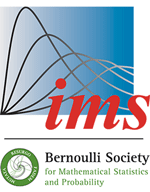Abstract
Thanks to their simplicity and interpretable structure, auto-regressive processes are widely used to model time series data. However, many real time series data sets exhibit non-linear patterns, requiring non-linear modeling. The threshold Auto-Regressive (TAR) process provides a family of non-linear auto-regressive time series models in which the process dynamics are specific step functions of a thresholding variable. While estimation and inference for low-dimensional TAR models have been investigated, high-dimensional TAR models have received less attention. In this article, we develop a new framework for estimating high-dimensional TAR models, and propose two different sparsity-inducing penalties. The first penalty corresponds to a natural extension of classical TAR model to high-dimensional settings, where the same threshold is enforced for all model parameters. Our second penalty develops a more flexible TAR model, where different thresholds are allowed for different auto-regressive coefficients. We show that both penalized estimation strategies can be utilized in a three-step procedure that consistently learns both the thresholds and the corresponding auto-regressive coefficients. However, our theoretical and empirical investigations show that the direct extension of the TAR model is not appropriate for high-dimensional settings and is better suited for moderate dimensions. In contrast, the more flexible extension of the TAR model leads to consistent estimation and superior empirical performance in high dimensions.
Funding Statement
This work was partially supported by grants DMS-1915855 and DMS-1722246 from the National Science Foundation and grant R01GM133848 from the National Institutes of Health.
Acknowledgments
We thank two anonymous reviewers and the AE for their helpful comments.
Citation
Kunhui Zhang. Abolfazl Safikhani. Alex Tank. Ali Shojaie. "Penalized estimation of threshold auto-regressive models with many components and thresholds." Electron. J. Statist. 16 (1) 1891 - 1951, 2022. https://doi.org/10.1214/22-EJS1982





